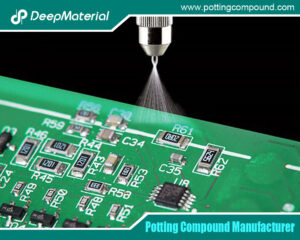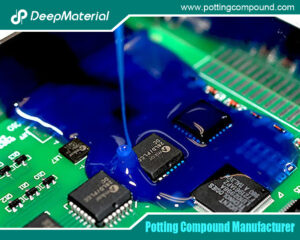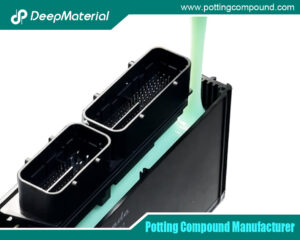
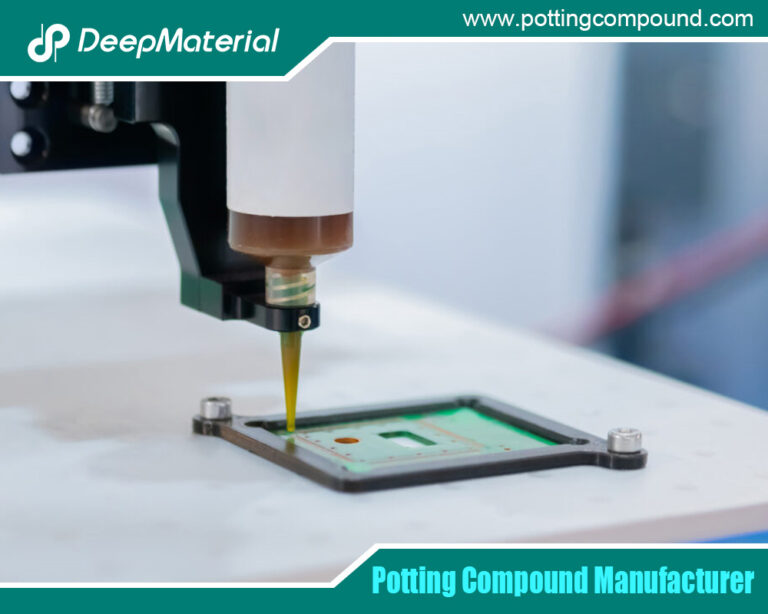
The Benefits of Conformal Coating for Electronics Products
- Electronic Potting Material Manufacturer
- August 26, 2025
- acrylic vs silicone conformal coating, Automotive potting material manufacturers, Benefits of Potting Electronics, Ceramic Potting Compound, Ceramic Potting Compound Manufacturer, china electronic potting silicone manufacturer, china electronic potting silicone supplier, circuit board potting, circuit board potting compound, coating for electronic implants, coating heads adhesive application, coating material manufacturer, conformal coating, conformal coating electronics, conformal coating for electronics, conformal coating for pcb, conformal coating for pcb standards, Conformal Coating in Electronic, conformal coating in electronics market, conformal coating manufacturers, conformal coating market, conformal coating material, conformal coating material types, conformal coating overspray, conformal coating pcb, conformal coating process, conformal coating silicone, conformal coating spray, conformal coating spray manufacturer, conformal coating spray market, conformal coatings for electronics, conformal coatings for electronics applications, Connector Potting Compound, Connector Potting Process
The Bbenefits of Conformal Coating for Electronics Products
In the world of electronics, where devices are increasingly compact and exposed to harsh environments, protecting sensitive components is critical to ensuring performance and longevity. Conformal coating for electronics is a widely adopted technique that applies a thin, protective polymeric film to electronic assemblies, particularly printed circuit boards (PCBs), to shield them from moisture, dust, chemicals, and mechanical stress. These coatings enhance reliability without compromising the functionality or design of modern electronics.
Conformal coatings are essential in industries ranging from consumer electronics to aerospace, where environmental hazards like humidity, extreme temperatures, or corrosive chemicals can lead to corrosion, electrical failures, or reduced lifespan. Unlike potting, which fully encapsulates components, conformal coatings offer a lightweight, flexible solution that allows for repairs and modifications. This article explores the essentials of conformal coatings, including their properties, types, application methods, benefits, challenges, and selection criteria. Whether you’re an engineer designing a new device or a manufacturer optimizing production, this guide will provide valuable insights into leveraging conformal coatings to protect your electronics effectively.
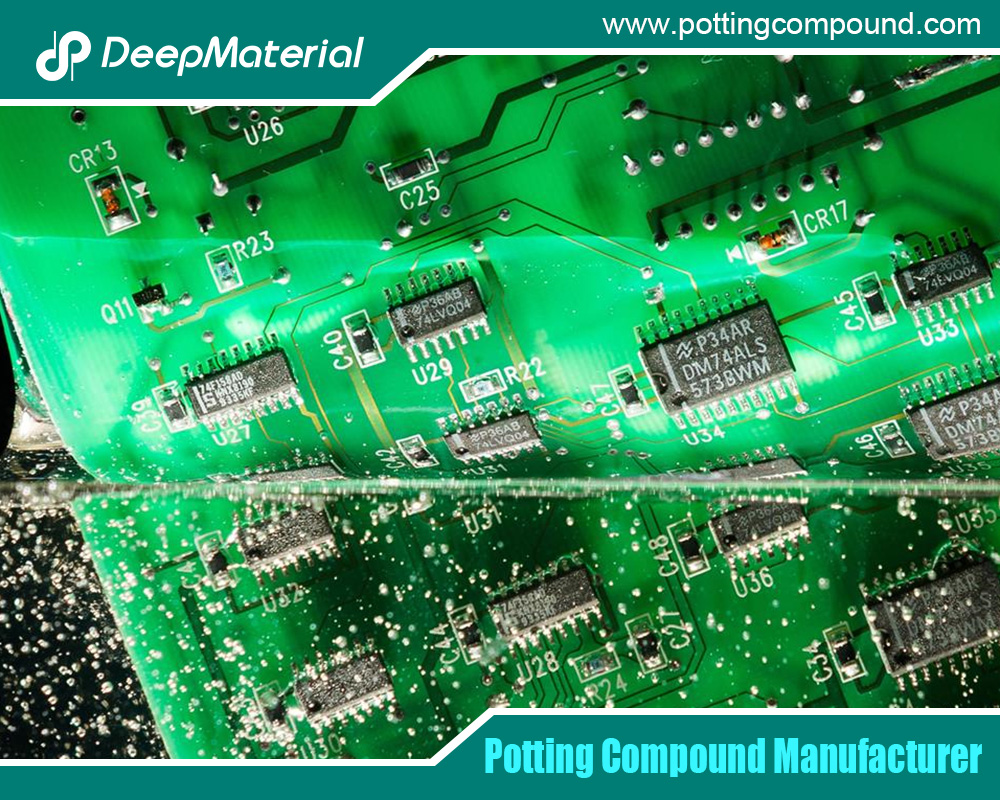
What is Conformal Coating for Electronics?
A conformal coating is a thin layer of polymer, typically 25 to 250 micrometers thick, applied to the surface of electronic assemblies like PCBs to protect them from environmental and operational stressors. The coating “conforms” to the contours of the components, covering exposed metal, solder joints, and traces without interfering with their functionality. Its primary purpose is to safeguard electronics from moisture, dust, chemicals, temperature extremes, and mechanical stress, preventing issues like corrosion, electrical arcing, or short circuits.
Conformal coatings differ from potting, which fully encases components in a thick resin, as they maintain accessibility for repairs and add minimal weight or bulk. Common materials include acrylics, polyurethanes, silicones, epoxies, and parylene, each offering unique properties like flexibility, chemical resistance, or thermal stability. These coatings are applied through methods such as spraying, dipping, brushing, or vapor deposition, depending on the material and production needs. Once applied, they cure via air drying, heat, UV light, or chemical reactions, forming a durable protective layer. Conformal coatings are critical for ensuring the reliability of electronics in demanding applications, from smartphones to aerospace systems.
Key Properties of Conformal Coatings
Conformal coatings are selected for their ability to protect electronics while maintaining performance. Key properties include:
- Electrical Insulation: High dielectric strength prevents electrical arcing and shorts, crucial for densely packed PCBs with closely spaced traces or high-voltage components.
- Moisture and Chemical Resistance: Coatings form a barrier against water, humidity, and chemicals like solvents, oils, or acids, reducing corrosion and degradation.
- Thermal Stability: Many coatings withstand temperatures from -65°C to over 200°C, protecting electronics in extreme environments like automotive engines or high-altitude systems.
- Mechanical Protection and Flexibility: Coatings absorb vibrations and shocks, protecting solder joints. Flexible coatings accommodate thermal expansion without cracking.
- UV Stability and Optical Clarity: Certain coatings resist UV degradation, preventing yellowing in outdoor applications, while some (e.g., acrylics) are transparent for visual inspection.
These properties ensure conformal coatings meet the diverse needs of electronics, balancing protection with practical considerations like ease of application and reworkability. The choice of coating depends on the operating environment, electrical requirements, and production constraints.
Types of Conformal Coatings
Conformal coatings come in several types, each tailored to specific applications:
- Acrylic Coatings: Easy to apply and remove, acrylics offer good moisture resistance and electrical insulation, ideal for general-purpose electronics like consumer devices. Pros: Cost-effective, easy to rework, good insulation.
Cons: Limited chemical and high-temperature resistance.
- Polyurethane Coatings: These provide excellent chemical resistance and toughness, suitable for harsh environments like automotive or industrial applications. Pros: Strong chemical resistance, durable, flexible.
Cons: Difficult to remove, longer curing times.
3. Silicone Coatings: Highly flexible and thermally stable, silicones perform in extreme temperatures (-65°C to 200°C) and UV-exposed environments, ideal for aerospace or outdoor applications. Pros: Wide temperature range, UV resistance, flexible.
Cons: Expensive, challenging to rework.
4. Epoxy Coatings: Rigid and highly resistant to chemicals and abrasion, epoxies are used in rugged applications but are less common due to inflexibility. Pros: Excellent chemical resistance, durable.
Cons: Brittle, difficult to remove.
5. Parylene Coatings: Applied via vapor deposition, parylene forms a thin, uniform film with superior moisture and dielectric properties, used in medical and aerospace applications. Pros: Uniform coverage, excellent insulation, biocompatible.
Cons: High cost, complex application.
Each type addresses specific environmental, mechanical, or electrical challenges, allowing manufacturers to select the optimal coating for their electronics.
Application Methods for Conformal Coatings
Applying conformal coatings requires precision to ensure uniform coverage and protection. Common methods include:
- Spray Application: The most popular method, spraying uses manual (aerosol cans, handheld sprayers) or automated (robotic systems) techniques to apply coatings. It’s ideal for complex geometries and scalable for high-volume production.
- Dip Coating: PCBs are submerged in a coating bath and withdrawn at a controlled rate, suitable for high-throughput applications but requiring careful masking to avoid coating sensitive areas.
- Brush Application: Used for small-scale or touch-up work, brushing is cost-effective but less precise, risking uneven coverage.
- Vapor Deposition (Parylene): Parylene is applied in a vacuum chamber, depositing a uniform film ideal for intricate assemblies or medical devices, though it requires specialized equipment.
- Curing and Quality Control: Curing methods include air drying (acrylics, polyurethanes), heat (some polyurethanes), or UV light (UV-curable coatings). Inspection ensures uniformity and defect-free coverage using visual checks, UV fluorescence, or automated optical inspection (AOI).
Proper preparation, such as cleaning PCBs to remove contaminants and masking sensitive areas, is critical. Automated spraying and vapor deposition offer consistency for large-scale production, while ventilation is essential for solvent-based coatings to ensure worker safety.
Applications of Conformal Coatings in Electronics
Conformal coatings are used across diverse industries to protect electronics in challenging environments:
- Consumer Electronics: Smartphones, tablets, wearables, and appliances use coatings to shield PCBs from humidity, dust, and spills, ensuring reliability in daily use.
- Automotive Electronics: Engine control units (ECUs), sensors, and infotainment systems rely on coatings to withstand heat, oil, vibrations, and road salt.
- Aerospace and Defense: Avionics, radar, and communication systems use coatings to endure extreme temperatures, high altitudes, and mechanical stress.
- Industrial Electronics: Motors, control systems, and sensors in factories benefit from coatings that resist chemicals, dust, and temperature fluctuations.
- Medical Devices: PCBs in diagnostic tools, wearables, and implantable devices use biocompatible coatings like parylene to protect against bodily fluids and sterilization processes.
- Renewable Energy Systems: Solar inverters and wind turbine controllers use coatings to resist UV exposure, rain, and thermal cycling in outdoor environments.
These applications highlight the versatility of conformal coatings, tailored to meet industry-specific demands while ensuring electronic reliability.
Benefits of Conformal Coatings for Electronics
Conformal coatings offer several advantages, making them a preferred choice for electronics protection:
- Enhanced Reliability and Longevity: Coatings prevent corrosion, electrical shorts, and performance degradation, extending the lifespan of electronics in harsh environments.
- Environmental Protection: They shield against moisture, chemicals, dust, and UV exposure, ensuring consistent performance in diverse conditions.
- Lightweight and Space-Saving: Thin coatings add minimal weight or bulk, ideal for compact devices like wearables or drones.
- Reworkability: Acrylic and some UV-curable coatings can be removed for repairs, reducing maintenance costs.
- Cost-Effectiveness: Coatings provide robust protection at a lower cost than potting, offering long-term savings by reducing failures.
These benefits make conformal coatings an efficient solution for manufacturers seeking to balance protection, performance, and cost.
Challenges and Considerations
Conformal coatings present challenges that must be addressed:
- Application Uniformity: Achieving consistent thickness on complex PCBs can be difficult, risking pinholes or thin spots that compromise protection.
- Material Compatibility: Some coatings may not adhere well to certain PCB materials, risking delamination if compatibility is not tested.
- Cost and Equipment Requirements: High-performance coatings like parylene or silicones are expensive, and specialized application equipment (e.g., vapor deposition or UV curing systems) adds upfront costs.
- Environmental and Regulatory Concerns: Solvent-based coatings may emit volatile organic compounds (VOCs), requiring compliance with environmental regulations and proper ventilation.
- Rework Challenges: Coatings like parylene or epoxy are difficult to remove, increasing repair complexity and costs.
Manufacturers can mitigate these challenges by selecting appropriate coatings, testing compatibility, and investing in precise application equipment.
How to Choose the Right Conformal Coating
Selecting the appropriate conformal coating involves evaluating several factors:
- Environmental Conditions: Assess exposure to moisture, chemicals, UV light, or temperature extremes to choose a resistant coating (e.g., silicone for high temperatures).
- Electrical Requirements: Ensure the coating’s dielectric strength meets the voltage demands of the electronics to prevent arcing.
- Mechanical Needs: Determine whether flexibility (e.g., silicone) or rigidity (e.g., epoxy) is required based on vibration or thermal expansion.
- Application Method: Confirm compatibility with spraying, dipping, or vapor deposition based on production scale and equipment.
- Reworkability: Consider whether the coating needs to be removable (e.g., acrylics) or permanent (e.g., parylene).
- Certifications: Look for coatings meeting standards like UL, IPC-CC-830, or MIL-I-46058C for compliance.
- Budget: Balance performance with cost, especially for high-volume production.
Testing samples and collaborating with suppliers can help identify the best coating for optimal protection and efficiency.

Conclusion
Conformal coatings for electronics are a critical solution for protecting PCBs and assemblies in demanding environments, offering insulation, environmental resistance, and mechanical support. Their versatility across industries—from consumer electronics to medical devices—underscores their importance in ensuring reliability and longevity. By understanding their properties, types, and application methods, manufacturers can leverage conformal coatings to enhance product performance.
As technology advances, innovations like eco-friendly coatings and automated application systems promise to expand their utility. For engineers and manufacturers, exploring the range of conformal coatings available today is a vital step toward building resilient electronics. Consult with suppliers, test samples, and evaluate your needs to find the perfect coating, ensuring your devices thrive in even the most challenging conditions.
For more about choosing the benefits of conformal coating for electronics products, you can pay a visit to DeepMaterial at https://www.pottingcompound.com/ for more info.
Recent Posts
- What Are the Core Differences Between Different Conformal Coating Types?
- The Benefits of Conformal Coating for Electronics Products
- Conformal Coating Spray
- UV Curing Potting Compound
- The Ultimate Guide to Electrical Potting Compound and Market Application
- The Top Polyurethane Potting Compound
- Advanced Epoxy Potting Compound for Superior Electronic Protection
- Waterproof Potting Compound: A Comprehensive Guide
- Silicone Potting Compound for Electronics
- Potting Compound vs. Epoxy: A Comprehensive Comparison
Tags
Related Posts

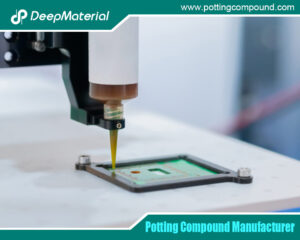
The Benefits of Conformal Coating for Electronics Products
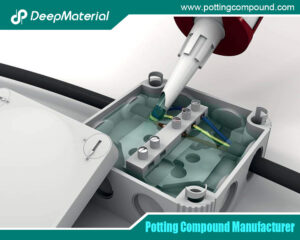
Conformal Coating Spray
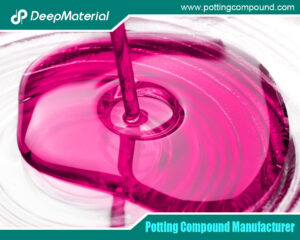
UV Curing Potting Compound
